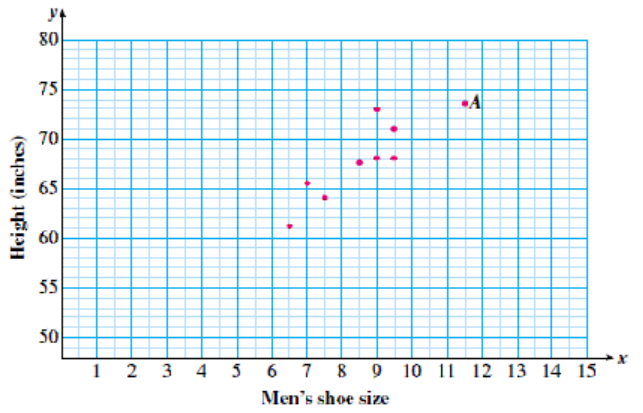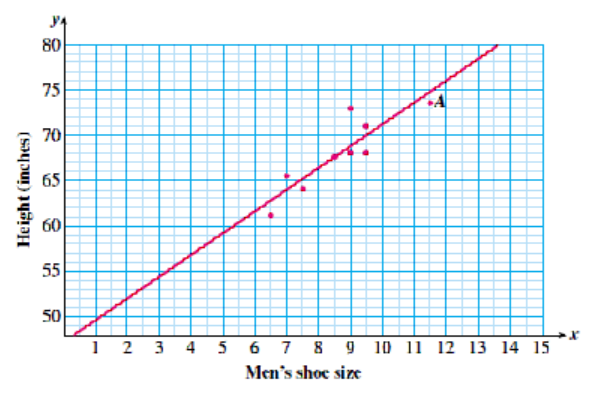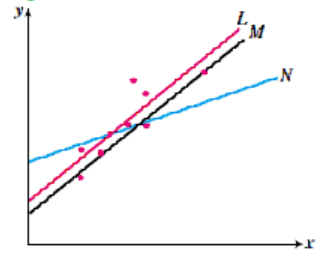Example A.2.1.
The scatterplot shows the height and shoe size of a group of men.
- State the height and shoe size of the man represented by point \(A\text{.}\)
- Find the heights of two men with the same shoe size.

Solution.
- The man represented by point \(A\) has shoe size \(11 \frac{1}{2}\) and is \(73 \frac{1}{2}\) inches tall.
- There are two men with shoe size 9, with heights 68 and 73 inches. There are also two men with shoe size \(9 \frac{1}{2}\text{,}\) with heights 68 and 71 inches.



